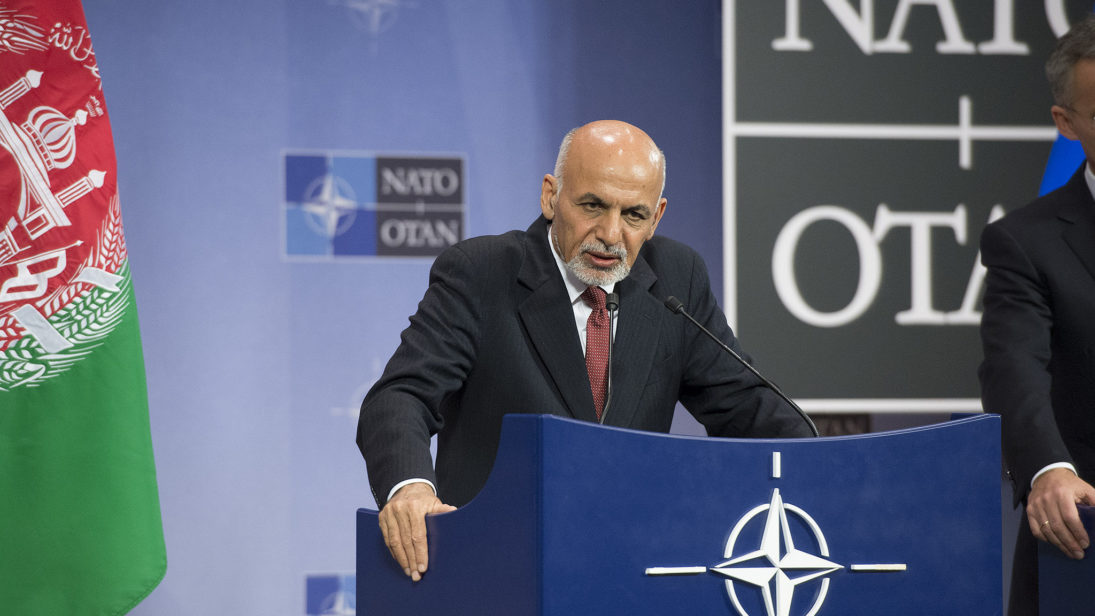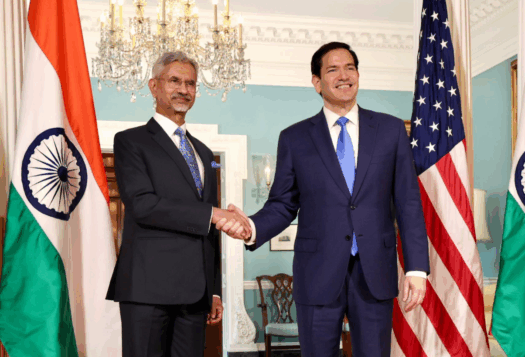
The past month has seen the wheels turning towards a peace process in Afghanistan. A rare three-day truce observed by Afghan soldiers and the Taliban alike further revealed divisions between hardliners within the Taliban and the rank-and-file, who appear to be amenable to peace; protesters have marched across provinces in Afghanistan emphasizing the urgent need for immediate reconciliation; and, finally, U.S. Secretary of State Mike Pompeo and Alice G. Wells, the State Department’s top diplomat for Afghanistan, visited Kabul to try to create space for peace talks with the Taliban. Today, a report from the Wall Street Journal alleged that a “top envoy for South Asia” met with the Taliban this week to discuss peace talks.
With each small step, a consensus appears to be forming in both Kabul and Washington that jumpstarting negotiations with the Taliban should be a priority. This has likely been driven by the long-held perception that the war remains militarily a stalemate. Little has changed about the United States’ ability to roll back Taliban gains since President Donald Trump announced his new South Asia strategy nearly one year ago. Though U.S. troop presence has risen to 15,000, Taliban presence has not decreased: according to the Long War Journal, 201 districts are contested by the Taliban, whereas 41 districts are under the Taliban control. During the first quarter of this year, United Nations Assistance Mission in Afghanistan (UNAMA) documented 2,258 civilian casualties in Afghanistan, a number close to the losses in the previous two years.
Coming on the tail end of scenes of Taliban soldiers mingling with the Afghan security forces across Afghanistan last month during the unexpected Eid ceasefire, the U.S. push for direct talks marks a paradigm shift in America’s stated approach to Afghanistan, which previously outlined that only the National Unity Government in Kabul had the mandate to negotiate with the Taliban directly. What does this policy shift mean for the potential for peace in Afghanistan, and the U.S. commitment to an “Afghan-led and Afghan-owned” peace process?
Prioritizing an Afghan-led Peace Process
Arguably, the current push for peace in Afghanistan began with the Kabul Process, the principal Afghan-driven political process that met for its second time in February. During the meeting of the one-day conference, which was attended by 20 countries and several international organizations, Afghan President Ashraf Ghani extended an offer for peace talks without preconditions to the Taliban and emphasized the need for both a peace process and a ceasefire.
Though the Taliban did not acquiesce to President Ghani’s offers—demanding direct talks with the United States instead—the Kabul Process was important as it signaled Ghani’s desire to push forward an Afghan-led peace process.
Though the Taliban did not acquiesce to President Ghani’s offers—demanding direct talks with the United States instead—the Kabul Process was important as it signaled Ghani’s desire to push forward an Afghan-led peace process, and the United States’ wholehearted support for that process. The same pattern can be seen in the recent Eid ceasefire, which was initiated by the Afghan government and respected by U.S. forces in Afghanistan. The fact that the government in Kabul has been driving the issue of a political settlement with the Taliban forward, with the United States following suit, demonstrates that the Afghan government and the United States remain in sync on the Afghan government’s central role in the peace process.
Hurdles from the Taliban
The brings us to the largest obstacle in the way of peace talks: the Taliban’s acceptance of negotiations with the Afghan government. The Taliban has long held that direct talks with the United States, along with an immediate departure of foreign forces, are a precondition for the group’s involvement in negotiations. Now, with the apparent U.S. willingness to directly negotiate with the Taliban and contact between the two reportedly underway, much depends on whether or at what point they would be ready to negotiate with the Afghan government.
The Taliban is likely entering negotiations with the United States knowing well its adversary’s position that Afghanistan’s political future must be determined by the government of Afghanistan and the Taliban together. It is possible, though, that Taliban hardliners perceive this position as open to negotiation. Indeed, though the Trump administration’s high-on-military, low-on-diplomacy approach stressed that an “effective military effort” would be the driving force for a political settlement in Afghanistan, direct talks between the United States and the Taliban are happening despite little change in the military situation from last year. Nonetheless, it would be a dramatic shift for the United States to turn back on its declared position that negotiations over Afghanistan’s political future must take place between Afghan government and the Taliban. In all likelihood, the road to a peace process will become clear only when the Taliban accepts that in order to reach a settlement with the U.S. government, they will have to talk to the Afghan government.

Positive Signs from Pakistan
Improved Af-Pak ties and U.S. engagement with Pakistan on the ceasefire are positive signs that Pakistan could be engaged to help the peace process.
The United States has long been attempting to use Pakistan’s leverage over the Taliban to influence the group to come to the table and participate in an Afghan-centered peace process. To this end, the United States likely engaged Pakistan on agreeing to the Eid ceasefire to promote negotiations. President Ghani, too, appears cognizant of the reality that deepened trust between the two neighbors will make it more likely that Pakistan is comfortable with an Afghan-centered peace process moving forward—a fact that may have prompted the series of recent improvements in Afghanistan-Pakistan bilateral ties. Whether Pakistan will play “a constructive role” in an Afghan-centered peace process—as articulated by Lisa Curtis, senior director for South and Central Asia at the National Security Council—remains to be seen, but will certainly be a decisive factor in influencing the Taliban to accept an Afghan-led process. For now, however, improved Af-Pak ties and U.S. engagement with Pakistan on the ceasefire are positive signs that Pakistan could be engaged to help the peace process.
Conclusion
Momentum for peace is increasing in Afghanistan with a changed U.S. approach and increased demand for reconciliation from within Afghanistan. The time is now to give peace a chance in Afghanistan. The United States should, however possible, be inclusive of Afghan initiatives, promote moderate Taliban factions within the peace process, and harness the role of Pakistan to collaborate towards peace in Afghanistan.
***
Image 1: NATO North Atlantic Treaty Organization via Flickr
Image 2: Wakil Kohsar via Getty


